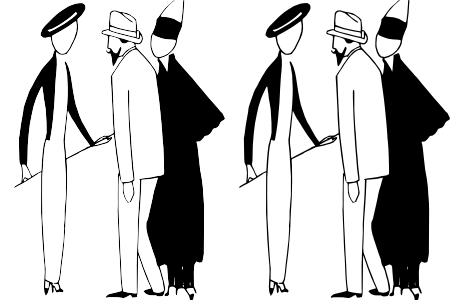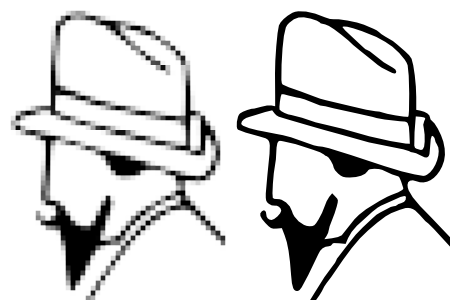| Inkscape » Introduction » Vector Graphics |    |
|---|
There are two basic types of graphic images: bitmap (or raster) images and vector images. In the first case, the image is defined in terms of rows and columns of individual pixels, each with its own color. In the second case, the image is defined in terms of lines, both straight and curved. A single straight line is described in terms of its two end points. The difference in these types of graphic images becomes readily apparent when a drawing is enlarged.

When the bitmap resolution of a drawing matches the display resolution, the objects in the drawing look smooth.

If the bitmap resolution is significantly less than the display resolution, the display will show jagged lines.

All output devices, with few exceptions, use a raster or bitmap image to display graphics.[2] The real difference between drawing with bitmap graphics and vector graphics is the point at which the image is converted into a bitmap. In the case of vector graphics, this conversion is done at the very last step before display, ensuring that the final image matches exactly the resolution of the output device.
[2] The few vector output devices include large plotters for engineering and architectural drawings and archaic Tektronix terminals.
© 2005-2008 Tavmjong Bah. | Get the book. |